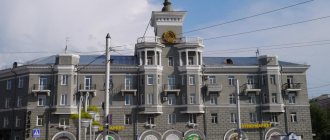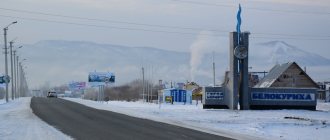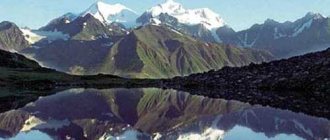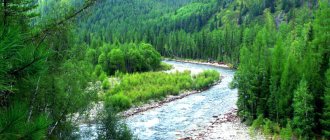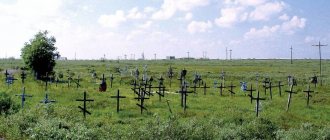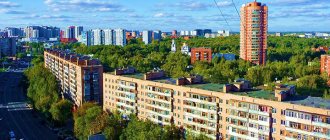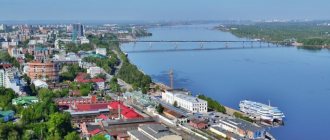The implementation of state policy at the level of subjects, the solution of regional social and economic problems in the Russian Federation is entrusted to the State Administration and other local government bodies in Rubtsovsk. The entrusted responsibility is implemented through the approval of laws and other regulatory documents on behalf of the subject of the Russian Federation. In accordance with federal legislation, state administrations are vested with authority within the limits of their jurisdiction, as well as in matters of general work with federal and regional authorities.
The state administration in Rubtsovsk, as a regional structure of executive power, is responsible for management of production and economic activities, financial, social spheres in the territory of the entrusted region. Their activities and the implementation of assigned tasks are based on decisions, laws, and regulations adopted by regional authorities, as well as at the federal level.
Department of Social Protection of the Population - Rubtsovsk
Within the limits of its competence, each administration issues regulatory documents that are subject to implementation by all subjects of the region.
General information and history of Rubtsovsk
This wonderful city is located among the steppes in the Altai region.
Despite its relative proximity to Kazakhstan, Rubtsovsk, located on the banks of the Alei River, is not considered a border town. Initially, in 1886, this city was founded as a village and only in 1892 residents were allowed to use the land, so the history of the city dates back to this year. It was founded by Mikhail Rubtsov, in whose honor the city was subsequently named.
Monument to fallen soldiers on the station square. Photo by you-rev (https://fotki.yandex.ru/users/you-rev/)
The formation of the city and its development occurred during the Second World War, when evacuated enterprises were located on its territory. The development of the city did not stop even after its completion. Its economy grew until the collapse of the Soviet Union, after which its performance fell and has not increased to this day.
Coat of arms
The coat of arms of Rubtsovsk is presented in the form of a French shield. In the middle, against the background of a sun circle, is a part of a gear, symbolizing mechanical engineering. Inside the circle is a scroll with the number “1892” (the year the city was founded). There is a blue ribbon running diagonally to the lower left corner, representing the Alei River. In the upper part, against the background of the blue sky, is a falcon, common in these parts. A bird spreading its wings soars over a field of ripe wheat. There is a row-crop tractor on it. Wheeled vehicles characterize the products of the urban planning enterprise. The green stripe along the symbolic river signifies fertility, life, nature. At the bottom, near three ripe ears of wheat, “Rubtsovsk” is written in red letters.
The artistic composition was approved by Resolution of the Rubtsovsk City Council of Deputies dated July 20, 2002 No. 363.
Climate and ecology
Rubtsovsk is characterized by a continental climate, just like most cities located on continents. In January, the thermometer rarely shows temperatures below 16.3 degrees, and in July it almost never rises above 21 degrees, but most days of the year are sunny. There is not much precipitation, on average about 335 mm.
The air in Rubtsovsk is very polluted. This is due to the large amount of dust and harmful substances that are emitted into the air every day by heating stations, various enterprises and vehicles. A large number of suspended particles were released into the air by Alttrak OJSC, a machine-building company. It should also be noted that in various parts of the city there is an excess of sulfur dioxide, the main source of which is the locomotive depot.
Bridge over the Alei River. Photo by you-rev (https://fotki.yandex.ru/users/you-rev/)
Water also suffers. Wastewater from MP Vodokanal, OJSC Alttracom, and wastewater treatment plants is discharged into the Alei River; the WWTP MP Vodokanal also pollutes the river below the city limits. Another factor that negatively affects the environment is the tests carried out at the Semipalatinsk test site, which caused radioactive contamination.
Population of Rubtsovsk
According to statistics at the beginning of 2014, 147,495 people lived in Rubtsovsk. In 2009, the number of births increased by 8.5%, amounting to 1,655 people, and the number of deaths was 4% less than in 2008, amounting to 2,355 people. Infant mortality also decreased by as much as 14.3%, which was 14.5 per 1000 people, while in 2008 this figure was 17.9 people. The population in Rubtsovsk is declining, but not at the same rate as previously noted.
Also in 2009, 687 people left Rubtsovsk, which is 229 people less than in 2008. Before 2008, there was an outflow of population from the city, and since 2009 there has been an increase in migration. Since 2009, 2,585 people have arrived in the city, and 1,899 have left. In recent years, the number of marriages has increased and the number of divorces has decreased, now there are 762 divorces for every 1,342.
Rubtsovsk. Palace of Culture for Tractor Builders. Photo by you-rev (https://fotki.yandex.ru/users/you-rev/)
Rubtsovsk, like many small provincial towns in Russia and neighboring countries, is currently experiencing difficult times. This test has been going on for about 20 years, since the Union collapsed. The fact is that the main infrastructure of the city and revenues to the local budget were generated by agricultural engineering factories, which were also the main source of employment for the city’s population.
With the collapse of the USSR, all production threads and connections with suppliers and consumers were gradually destroyed. The decline in agriculture also played a significant role. Now out of five factories, only one is operating at a quarter of its capacity. What saved him was that he specialized in producing products for the military industry.
All these factors naturally affect the moral and psychological climate in the city; it is difficult to imagine that many thousands of people suddenly found themselves without work, and as a consequence - a crime situation and nervousness in the city. But this is a separate topic.
Districts and real estate of Rubtsovsk
The city is relatively small, with a total area of 8,325 hectares and consists of a central part where administrative and cultural and entertainment centers are located, as well as numerous retail outlets and a central market.
Previously, when all the city's enterprises were operating, the districts were divided according to factory territories:
- ATZ region (Altai Tractor Plant) - the largest plant in its time not only in Siberia, but also in the country;
- AZTE district (Altai Tractor Electrical Equipment Plant) is an equally well-known enterprise, also an award-bearing and right-flank plant in its industry;
- ASM (Altai Agricultural Machinery Plant)
As in any city, in Rubtsovsk there are districts under unofficial names that have been around for decades and it seems that other names will no longer be suitable and will not reflect the essence and originality of the district.
Below the Kulatsky village, where wealthy people settled at the founding of the city, private buildings are concentrated in this area. Otorvanovka, Kopay - a city, Bermuda - these are the so-called slums, where at all times these areas were distinguished by a special crime situation.
There is a large concentration of the private sector in the western and southwestern (Garden - City) parts of the city. Previously, it was very difficult to get to the city center, transport was irregular and during rush hours people traveled to work on overcrowded buses. Now the situation has changed, minibuses have appeared, getting to the center has become much easier, and passenger traffic has decreased due to the closure of factories.
There is an area in the city called “houses”. His story is interesting. In the area of the RMZ plant (Rubtsovsky Machine-Building Plant), which specialized in the defense industry, they used to build prefabricated panel houses, as there was an acute shortage of housing for factory workers. In this way, the problem was partially solved, but the quality of housing left much to be desired. The housing did not in any way correspond to the climatic conditions of Siberia, so all the buildings were eventually demolished and built up with new modern houses. And the name of the area remained in the history of the city.
Housing prices in the city differ slightly compared to large cities, where the difference in prices across regions is noticeable. But in the level of our city this difference is also significant. In the city center, the price for a two-room apartment ranges from 700,000 rubles. up to 1.5 million depending on the layout, number of floors of the apartment, and the condition of the housing. On the outskirts of the city, the cost of real estate decreases by about 150 - 200 thousand. In the private sector, house prices also range from 700,000 to 3 million rubles. With such a gap in value, the area and condition, amenities and living space of the house are taken into account.
The outskirts of the city are being intensively built with cottages. The wealthiest citizens build housing that is comparable to a real work of art, while the middle class builds more modestly, but tastefully. Prices for such buildings are an order of magnitude higher than city apartments and are already calculated at about 2 - 5 million rubles and more.
Despite the difficulties, the city lives, raises talented people, develops and transforms into a modern cultural metropolis. Residents of Rubtsovsk believe in its future and selflessly love their city.
Rubtsovsk
Theaters
Rubtsovsky Drama Theater
The Drama Theater was founded in 1937, when a troupe of artists from the Altai Regional Collective and State Farm Drama Theater from Biysk was transferred to Rubtsovsk. The theater building is the former railway workers' club "Red October", built in 1929 and adapted into a theater. But the theater began its second season in 1938 in the building of the “12 Years of October” club, which is still located today. The club was the center of the city's cultural life: films and concerts were shown here, meetings and conferences were held. Now it is difficult to imagine the conditions in which the performances of the young theater were born. The stage for rehearsals was free only in the morning and at night. In 1943, the theater was given the status of the Rubtsovsky City Drama Theater.
The Puppet Theater celebrated its 40th anniversary in 2004. The creator and permanent director of the theater, Andrei Karlovich Brakhman, worked at the Barnaul Theater for Young Spectators. It was there that a puppet group arose, which then became the basis for the creation of a regional puppet theater. It is interesting that all the artists of the Rubtsovsky Puppet Theater are children, ordinary Rubtsovsk schoolchildren who come to the theater on their own. To encourage artists, the director came up with the title “Honored Puppeteer.” In 2003, at the festival in Novokuznetsk, the theater took first place in Siberia.
Museums. Galleries
The local history museum was opened on November 5, 1967 on the street. Shchetinkina, 1. The organizers were people in love with their city, engaged in local history: I.A. Pustynnikov, A.T. Ivanov – Secretary of the Society for the Protection of Monuments, A.V. Onnikov is a collector; historians of city schools: N.A. Sheidak, I.P. Susoev, G.P. Gnilitskaya. Leaders of industrial enterprises and public organizations of the city took an active part in the formation of the museum. In 1986, the museum moved to a beautiful building on Avenue. IN AND. Lenina, 137. In 11 halls of the museum there is an exhibition dedicated to the history of the city and the region, tells about the nature of Mountain Kolyvan, the first stone processing plant. The collection of stuffed animals in the nature department is interesting. In the hall of modernity, samples of Rubtsov porcelain and the environmental exhibition “While there is still time” are presented.
The Altai Museum of the History of Medicine was opened on December 17, 1993 at the city hospital No. 2 of Rubtsovsk (Kommunistichesky lane, 16). The museum's collection consists of ancient instruments and medicines, rare medical books that tell about the peculiarities of the development of medicine since the 18th century. on the territory of Altai. One of the large halls is dedicated to Demidov’s times - it has a section of mining medicine. Based on engravings, the 18th century doctor's chamber was restored. The founder of the museum is I.G. Becker, chief physician of city hospital No. 2, Honored Doctor of the Russian Federation, laureate of the Demidov Prize.
The Rubtsovsk Police Museum was created in May 1995. Photographs, documents, uniforms, awards, and works of local sculptors reveal the history of the Rubtsovsk police since 1921. In the history of the city there are many examples of the selfless attitude of police officers to their duty. One of the lanes in Rubtsovsk, where the city department of internal affairs is located, is named after policeman E. Ulezhnikov, who died during the liquidation of a gang during the Great Patriotic War.
The badminton museum , the only one in Russia, was created in Rubtsovsk in 1996 at the city badminton club “Blue Shuttlecock”. The museum presents the history of badminton. The museum was created through the efforts of Vladimir Alekseevich Osadchy, chairman of the regional Badminton Federation, coach of the highest category. His father, Alexey Osadchiy, brought the first rackets to Rubtsovsk when he saw badminton being played in the Barnaulsky sanatorium. The then famous opera singer Nikolai Ruban, who came to Rubtsovsk on tour, helped learn the rules of the game. Having learned that Ruban was the chairman of the USSR Badminton Federation, Alexey Osadchiy came to his hotel. Ruban was surprised that badminton was played in such a remote town, but he explained the rules. V. Osadchiy won his first serious victory in 1968. Then he repeatedly won city and regional competitions. In 1996, he organized a section and a museum attached to it. The museum stores materials about the achievements of Rubtsov badminton players throughout the existence of the section, a collection of shuttlecocks and rackets, badges, and pennants.
The art gallery was founded on January 27, 1990 by People's Artist, honorary citizen of the city V.V. Tikhonov, whose art studio worked for 30 years at the ATZ Palace of Culture. In 2002, the gallery moved to a new building in the city center. Today the city art gallery is a unique cultural center of a modern type with a total area of 690 m2. The gallery's collection consists mainly of paintings and graphics by Altai artists. The gallery has an art studio and an art salon, which hosts permanent exhibitions and sales of works by artists and masters of applied art from Rubtsovsk.
Temples
Michael the Archangel Church, Rubtsovsk
Michael the Archangel Church, a historical and architectural monument, is protected by the state (Sovetskaya St., 9). A large wooden church with 5 domes and a high bell tower. Its architectural form is that of a “ship” with a towering mast-bell tower. The simplicity of the architectural forms of Siberian churches is also characteristic of this building. The church is elongated in length, which is complemented by the vertical elongation of the bell tower and the direction of the domes to the heavens. The name of the saint in whose honor the temple was consecrated was not chosen by chance. Since M.A. Rubtsov was the first to arrive at the place where the city of Rubtsovsk is now located, and he brought with him a Guardian Angel, who began to protect the village and patronize this entire land. Most of the funds for the construction of the church were collected by village residents, the rest was added by the provincial authorities. The consecration of the church on February 4, 1906 was attended by guests from Tomsk, Barnaul, and residents of surrounding villages. This day became the patronal holiday of Rubtsovsk. Until 1917, the temple lived a calm and measured life - performing services, conducting rituals. But with the advent of Soviet power in 1922 and the adoption of the decree “On the confiscation of church valuables,” an inventory was carried out in order to confiscate silver and gold to provide relief to the starving. In 1937, the church was closed, the main bell was taken away to be melted down, and the icons were looted. The temple premises were adapted for various economic needs: grain and building materials were stored, and during the Great Patriotic War, a dormitory for tractor factory workers was located in the temple premises.
Since 1947, the temple was reopened. The recent history of the temple is characterized by the installation of new bells brought from Voronezh, and the acquisition of the Fedorov Icon of the Mother of God through the efforts of the employees of the Rubtsovsky Local History Museum.
The only icon in Russia dedicated to the 300th anniversary of the House of Romanov is kept in the Church of the Archangel Michael. In 1913, the dynasty of Russian tsars celebrated its 300th anniversary. In honor of this event, a large commemorative icon and several small forms of it were made in St. Petersburg. One of them was sent to Altai because this territory was the personal property of the royal family. The icon depicts all the patron saints whose names were borne by members of the royal family. During Soviet times, the icon disappeared from view, and it was discovered only in 1972 in the vicinity of the village. Kolyvan: it was used in the red corner instead of a table. The artist V. Tikhonov brought it to Rubtsovsk, and for another 20 years it was kept in the archives of the city local history museum. In 1992, it was first exhibited at the “Revival of Origins” exhibition. And when the museum staff saw that the townspeople began to come to the museum specifically to pray in front of the unique icon, they decided to transfer it to the Archangel Michael Church. Later it turned out that neither the large form nor any of the small forms of this icon have been preserved in Russia.
The Church of the Holy Great Martyr Victor in the maximum security colony UB 14/9 was consecrated in 1996 in the presence of representatives of the Moscow diocese. The temple was built according to all the canons of the Orthodox Church and was included in the register of temples in Altai. The simplicity and modesty of the external forms of the temple corresponds to the internal structure. Construction was carried out for 2 years by the prisoners themselves. The main source of funds is donations and sponsorships. The first service was conducted by Bishop Anthony of Altai and Barnaul.
City streets
In the 1960s The final formation of Rubtsovsk as an industrial center took place and the master plan for the development of the city was approved, carried out by the Lengiprogor Institute and designed for 20 years. Housing construction was carried out mainly through large factories. At this time, the Cheryomushki microdistrict began to be built up.
In 1967, Avenue named after them was opened to traffic. V.I. Lenin, which connected the southern and northern parts of the city. On the avenue there are a number of city attractions: the local history museum, the city administration building, the Komsomol glory square, the memorial complex dedicated to the Rubtsovites who died in Afghanistan, the Rossiya cinema.
The avenue is crossed by the street named after. M.I. Kalinina. On it there is a square named after. IN AND. Lenin, which preserves many signs of the history of the city: the Palace of Culture "Traktorostroitel", built in the second half of the last century, when the Altai Tractor Plant was gaining momentum in Rubtsovsk, where the Prime Minister and Minister of Foreign Affairs of the Republic of India Jawaharlal Nehru and his daughter stayed in June 1955 Indira Gandhi; an art gallery named after local artist V.V. Tikhonov and the most significant of the five city monuments to V.I. Lenin. At the intersection of Moskovskaya and Komsomolskaya streets there is a sculptural group by Moscow artist I. Postol, symbolizing the labor feat of the Altai Tractor Plant team during the Great Patriotic War.
In 1996, on Avenue named after. V.I. Lenin, the opening of a monument to the cadets of the Rubtsovsky Infantry School took place. The author is Rubtsovsky sculptor V. Chalykh. The Rubtsovskoye Infantry School was created a month after the start of the war. The first graduation took place in February 1942. In just 2.5 years, 11 thousand cadets completed training at the school.
On the street On Komsomolskaya there is a house under a spire, known as the first house with city amenities. After its construction, people came here as if on an excursion. The Central Youth House is also located here.
There are many memorable places on the station square: a fountain, a new beautiful station building, a memorial complex in honor of Rubtsovsk residents who died in the Great Patriotic War (architect D. Bazhenov, artist V. Chalykh). It was in the area of the railway station that the most fierce battles took place during the Civil War; it changed hands several times, until the partisans led by E. Mamontov in 1919 finally drove the Kolchakites out of the city.
Behind the railway line is the Garden City. It received this name because there was once a collective farm garden there.
City infrastructure
In Rubtsovsk, there is the following system for the provision of public services, according to which the organization supplying resources concludes contracts with those who perform the services. However, when the calculation occurs, a lot of problems arise for the consumed thermal resources. Heating networks make calculations taking into account the volume of services, based on the performance of a common house appliance, and if there is none, then based on the consumption standard established by the local government.
While management companies determine the amount of energy supplied using individual meters or according to the standard and do not take into account the general building meter. As a result, in those houses in which the meter is not installed, a significant difference appears, and, consequently, a debt to the one who supplies the resource. That is why all residents of apartment buildings that have meters, and do not have a common building meter, will have to pay the debt issued by service providers. In this case, it is useless to go to court, because as practice has shown, all such processes are resolved in favor of service providers.
There are trolleybuses, buses and minibuses in Rubtsovsk; in addition to public transport, there are taxis in Rubtsovsk. The Barnaul-Semipalatinsk railway line and the A 349 highway also pass through the city.
Rubtsovsky railway station. Photo by you-rev (https://fotki.yandex.ru/users/you-rev/)
There are 58 municipal educational institutions and 8 institutions of regional significance in Rubtsovsk. Every year, all institutions are inspected by a commission that checks the readiness of municipal institutions for the academic year. Members of the commission carefully inspect all premises to determine their suitability for receiving children. Every year the budget allocates funds for cosmetic repairs and the purchase of new equipment for educational institutions. Parents are also involved in the improvement of schools and kindergartens: they not only help make repairs, but also improve the territory.
Administration
Establishment
| Name of the organization | Administration |
| Area | |
| Telephone | +7 (38557) 9-64-00 +7 (38557) 9-64-01 |
| Working hours | no information |
| [email protected] | |
| Region | Altai region |
| Website | https://rubtsovsk.org |
| Organization address | Altai Territory, Rubtsovsk, Lenin Avenue, 130 |
Enterprises and work in Rubtsovsk
In Soviet times, enterprises in Rubtsovsk flourished, but now many of them have either closed, are idle, or are only partially operational. However, the city has preserved an engineering plant that offers many services: from development to manufacturing and repair. The plant is one of the leading factories in the Altai Territory and provides many jobs to the urban population.
Also in the city there is OJSC "Melnik", which produces flour products, which allows the Rubtsovsky bakery to work properly, because bread is always bought, which means there are always jobs there.
Shopping center Maria-RA. Photo by you-rev (https://fotki.yandex.ru/users/you-rev/)
As in any city, there is a meat processing plant in Rubtsovsk, which provides the urban population not only with dry-cured meat, but also with other types of products. In Rubtsovsk there are plenty of jobs not only at state-owned enterprises, but also at private ones. Most residents work hard at state-owned enterprises, where, in addition to a stable salary, there is a social package that, as a rule, is not provided by private organizations.
Industry on the map of Rubtsovsk
Today Rubtsovsk is rightfully considered the center of industry in the southwestern territory of the Altai Territory. Several largest industrial plants and factories operate here, producing equipment for soil cultivation, spare parts for trains, special purpose mechanical engineering, agricultural engineering and various metal products, etc. To find a suitable address, you need to use a map with house numbers, or use online search.
To get the address, you need to type the following data in the search window - prospectus (highway, highway, etc.), as well as the house number and click “Find”. In addition, in the territorial area of Rubtsovsk there are factories producing food and light products. Also, passenger and freight transportation, as well as food services for residents and the service sector are well developed here.
Crime
Rubtsovsk is not a crime-ridden city. Of course, like in any other city, there are thefts, robberies, and even murders. The only truly terrible case was the murder in the Omut cafe-bar, when two friends were beaten. One friend was beaten on the head by five people, and the other was held. Nobody tried to help the guys: neither the bar staff nor the visitors. They released the second only after the first stopped breathing and ran away. The ambulance refused to respond to this call. A friend tried to take the beaten man to the hospital himself in a taxi, but the taxi drivers, seeing his bloody clothes, refused him. The guy had to run to the police station and only after that the ambulance arrived. The beaten guy underwent surgery on his skull and fell into a coma. On the third day he was gone, and those who beat him were released on their own recognizance.
This murder still worries local residents, especially since a year before, a similar murder was committed, but not with such cruelty. The only thing that scares the city authorities is the growing juvenile crime. Every year, criminals become younger and crimes become more significant.


